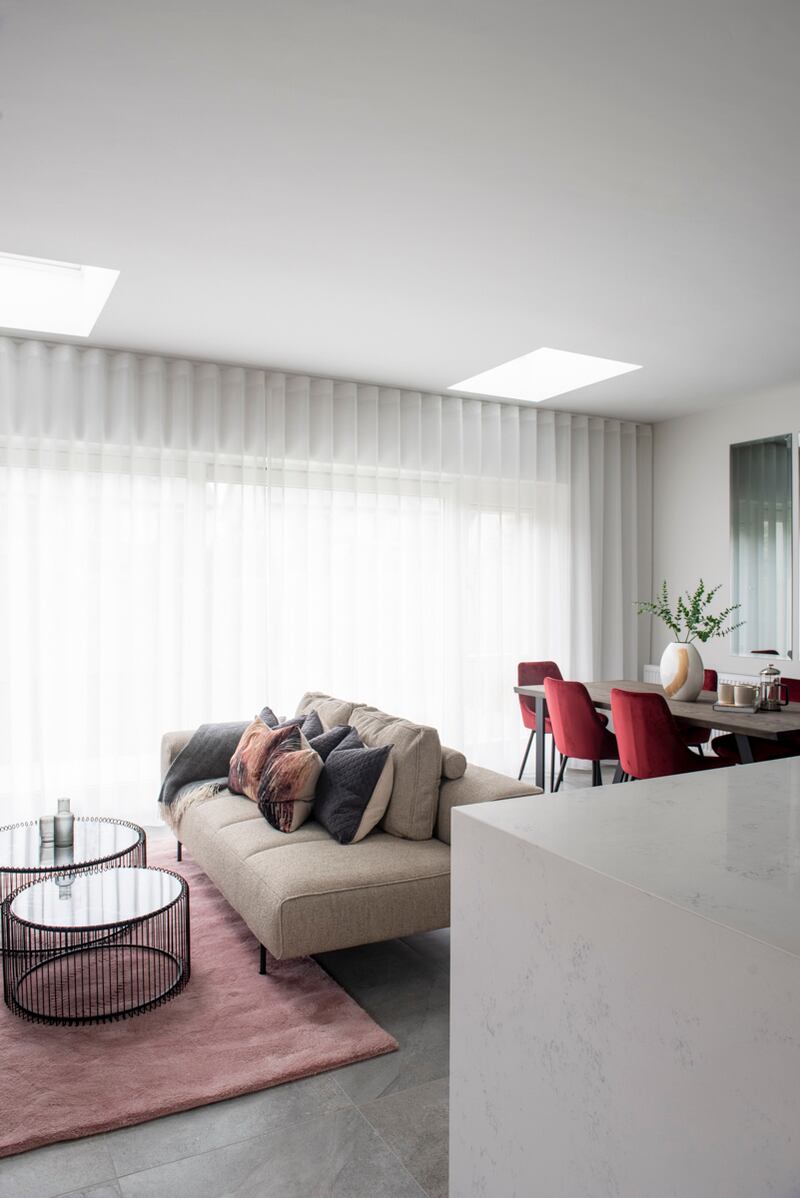Choosing curtains for your home is about more than just style and aesthetics. A well-chosen set of curtains can make your space cosier, reduce noise and increase security. With so many options available, it is important to consider your specific needs, such as light control, privacy, and insulation, to ensure you make the right choice for your space.
Sleep quality
The right curtains can significantly improve your home’s comfort and style. Interlined curtains or curtains with thermal linings can keep your home cosy during winter by enhancing insulation. These options not only make your home more energy-efficient but may also save you money on utility bills.
Properly fitted curtains also contribute to better sleep quality. Blackout-lined curtains help block out light, ensuring a more restful environment. Choosing full-length curtains that span wall-to-wall minimises light seepage, even on the brightest summer mornings.
For period homes or those with traditional decor, consider adding a pelmet to further block light and improve your window’s appearance. Alternatively, fitting a cornice in front of ceiling-mounted curtains offers a modern approach that blocks sunlight and adds a decorative element to the room. Leave about 150mm between the wall and the cornice to accommodate the track and curtains.
READ MORE
Choose for heavy fabrics or add interlining to your curtains to create a peaceful and quiet atmosphere. Heavier curtains will muffle outside noise, helping you to get a good night’s rest.
Headings
Choosing the ideal curtain headings is essential for both aesthetics and functionality.
Eyelet curtains give a modern and sleek look, with metal or wooden rings threaded through the top of the curtain and hung from a curtain pole. These curtains form uniform pleats when hung and are perfect for contemporary homes seeking style and convenience. The poles come in various sizes and finishes to suit your preferences.
Pencil pleat curtains offer a more traditional and structured look, with fabric gathered into tight, cylindrical pleats. “We don’t get many requests for this style of pleat any more,” says Trevor Hynes from Solaris Blinds and Curtains. “They are considered a little old-fashioned now.”
French pleat curtains feature tightly stitched pleats that create refined folds as they hang. This style is popular for traditional or formal spaces needing a tailored finish.
Wave curtains feature soft, rippling folds, giving them a relaxed and effortless appearance. Using a track system with a simple heading, these curtains create a contemporary look that complements lightweight fabrics like sheers and wool. Consider extending them from wall to wall and floor to ceiling for maximum impact. Wave system curtains require less fabric than other styles, making them a more cost-effective choice.
Fabric
Lightweight fabrics, such as linen and cotton, let in natural light while still giving you privacy. They are great for informal or minimalist spaces, such as kitchens or open-plan livingrooms, where you don’t want to block out too much light. Linen adds a laid-back, relaxed feel with its natural texture. Cotton is another excellent choice and works well in any space, suiting traditional and modern decor.
Heavy fabrics like velvet and wool provide a luxurious and elegant look while also offering practical benefits such as insulation. These fabrics are perfect for formal rooms or spaces where blocking light or reducing drafts is a priority.
When selecting heavier fabrics, it’s essential to consider the overall weight and the stability of the walls you’ll be fixing them to. Higher ceilings and heavy linings can contribute to curtains being extremely heavy. “Opt for a lighter fleece lining when working with heavier fabrics to prevent the curtains becoming excessively heavy,” Hynes advises.
Lastly, sheer fabrics such as voile are ideal for privacy without sacrificing natural light. Layering sheers with heavier curtains can create a versatile window treatment that adapts to your needs throughout the day.
Security

Automated curtains offer an added layer of security and convenience to your home. With options for remote control via smartphones, remotes, or voice commands through smart home assistants like Alexa or Google Home, you can operate your curtains from anywhere, even on holiday.
According to Hynes, automated curtains are a practical choice for any room in your home. They offer convenience and help extend the lifespan of your curtains by reducing the need to touch the curtains to open and close them.
Most automated curtain systems are DIY-friendly, with motorised tracks that work with existing curtains or fully automated systems with integrated curtain poles. However, professional installation may be necessary for complex set-ups or heavier curtains.
Automated curtain systems can be battery-powered or wired, each with its advantages. Battery-powered systems are easy to install but require regular battery replacements, especially for tall windows. Wired systems offer reliability but can be more expensive to install.
Integrating automated curtains with other smart home devices increases convenience and security. Set schedules for your curtains to open and close, control them remotely, or combine them with smart lighting to create a fully automated living space. This level of control provides greater convenience and allows you to simulate occupancy while you’re away, making your home less of a target for potential intruders.
















